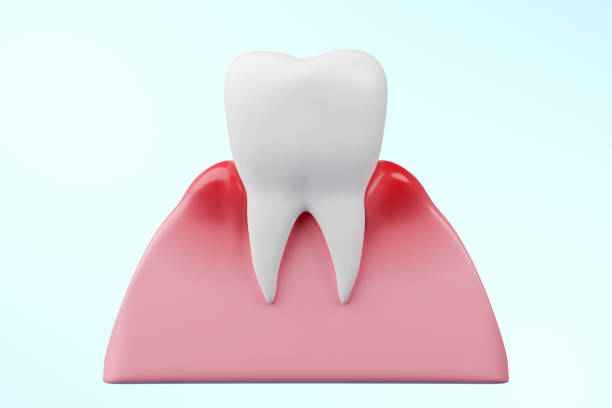Gum disease, sometimes called periodontal disease, is a common ailment that affects millions of Americans. It endangers the health of your gums and teeth through bacterial infection. Bacteria produce a sticky coating called plaque on your teeth. If left uncontrolled, this plaque hardens into tartar, which can irritate and inflame the gums. If left untreated, the infection can spread and harm the bone that supports your teeth, eventually leading to tooth loss.
The good news is that periodontal disease treatment is very efficient, especially in the early stages. Swollen, inflamed, or bleeding gums may not seem like a huge problem, but they are frequently the early indications of gum disease. Periodontal disease can have major implications if left untreated for too long, and it can even lead to critical health concerns in the future.
The Causes and Risk Factors for Gum Disease
While plaque (and the bacteria it contains) is the major cause of gum disease, other factors might contribute to its onset or exacerbate existing gum issues. The risk factors include:
- Chewing tobacco
Tobacco usage raises your risk of gum disease and makes treatment difficult;
- Malnutrition
A lack of important vitamins and nutrients can weaken your gums, making them more prone to infection;
- Excessive alcohol use
It might impair your immune system, reducing your body's capacity to fight gum disease;
- Smoking
It weakens the immune system and reduces blood supply to the gums, leaving them more susceptible to infection;
- High stress levels
Chronic stress can cause inflammation throughout the body, especially in the gums.
Certain drugs may induce dry mouth, which reduces saliva production and increases the risk of gum disease.
The Stages of Gum Disease
Gum disease goes through several phases, each with its own unique characteristics. Early identification allows for quick treatment and reduces problems. Here are the phases of gum disease.
Gingivitis
Gingivitis is the most mild and reversible stage of gum disease. Plaque accumulation causes gum irritation, which is what defines it. Symptoms of gingivitis can include swollen, puffy, or red gums. Gums bleed often when brushing or flossing, there’s bad breath (halitosis), and tender gums.
Periodontitis
If left untreated, gingivitis can lead to periodontitis, a more serious condition. In this stage, the infection penetrates further into the gum tissue and bone that supports your teeth. Periodontitis symptoms include the following:
- All of the symptoms of gingivitis described above;
- Receding gums can make teeth look longer;
- Loose teeth;
- Increased spacing between teeth;
- Pus between teeth and gums;
- Deep pockets surround the base of the teeth.
Advanced Periodontitis
Advanced periodontitis is the most serious type of gum disease. At this point, the bone and tissues that support your teeth have sustained substantial damage. The symptoms of advanced periodontitis may include:
- All periodontitis symptoms listed above;
- Severe pain when chewing;
- Significant teeth loss.
Treatment Options For Gum Disease
Treatment options for gum disease vary according to the severity of the ailment. In the early stages (gingivitis), proper mouth hygiene, a healthy diet, avoiding tobacco products, and frequent dental visits may often reverse the disease.
Additional therapies may be required for gum disease (periodontitis) in its more severe phases. This may include:
- Scaling and root planing (deep cleaning)
This process eliminates plaque and tartar accumulation behind the gum line;
- Antibiotics
Antibiotics may be taken to help manage a bacterial illness;
- Surgery
In extreme situations, gum surgery may be required to restore damaged tissue or bone.
Here are some symptoms that you should see a periodontist:
- You have any of the following signs of gum disease: bleeding gums, foul breath, or loose teeth;
- Your dentist suggests that you consult a periodontist for more advanced treatment;
- You have a history of gum disease and need regular monitoring or maintenance therapy;
- You are considering dental implants and require a strong foundation for the surgery.
How to Take Control of Your Oral Health and Avoid Gum Disease
- Practice proper dental hygiene
Brush your teeth twice a day, for two minutes each, and floss regularly;
- Maintain a balanced diet
Choose healthful meals that promote general health, including the gums;
- Schedule frequent dental check-ups and cleanings
Professional cleanings remove plaque and tartar accumulation that cannot be removed at home;
- Do not smoke or use tobacco products
Smoking and tobacco use dramatically increase your risk of developing gum disease;
- Managing stress effectively
Chronic stress can cause inflammation throughout the body, especially in the gums.






Comments